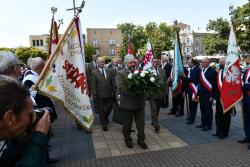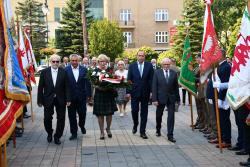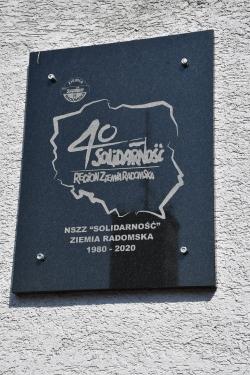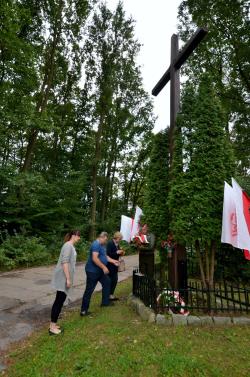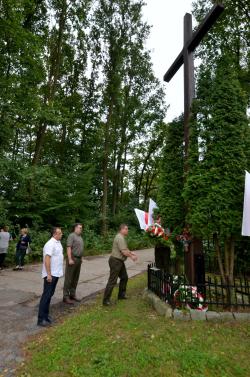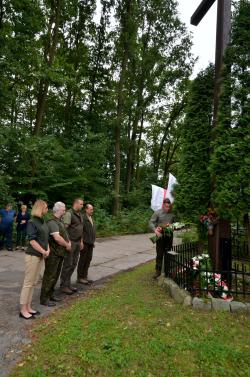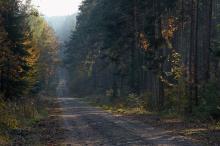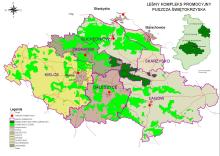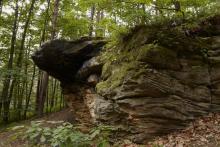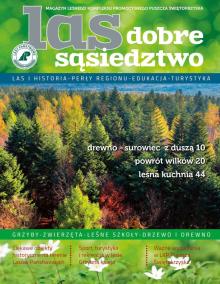 Asset Publisher
Asset Publisher
Polish forests
Poland is in the European lead, while concerning the area of all forests. They cover about 29,2 % of the country territory, and grow within the area of 9,1 million hectares. The overwhelming majority of the forests is state owned, of which almost 7,6 million hectares are managed by the State Forests National Forest Holding..
The number of Polish forest is still growing. The forestation rate of the country has increased from 21 % in 1945 to 29,2 % at the moment. Between 1995 and 2008, the forest area increased by 310 thousand ha. The basis for afforestation works is the "National Programme for Increasing the Forest Cover" (KPZL), assuming an increase of the forestation rate up to 30 % by 2020 and up to 33 % by 2050. Polish forests abound in flora, fauna and fungi. 65 % of the total number of animal species live there.
The forests grow in our country on poor soils, mainly because of the development of the agriculture in previous years. It influences the distribution of the types of the forest sites in Poland. Over 55 % of the forest areas is covered with coniferous forests. In other areas, there are forest sites, mainly the mixed ones. Their small part constitute alder and riparian forests – not more than 3 %.
In the years 1945 – 2011 the area of natural deciduous tree stands within the area of the State Forests National Forest Holding increased from 13 to 28,2 %.
Within the lowlands and uplands the most often occurring tee species is pine. It covers 64,3 % of the forest area of the State Forests National Forest Holding and 57,7 % of private and commune forests. In the mountains the predominant species is European spruce ( in the west) and European spruce with beech (in the east). Domination of pine is the result of carrying on sustainable forest management in the past. Once, the monocultures (crops or cultivations of one species) were the answer to the great demand of industry for wood. Such forests appeared to be quite fragile to climatic factors. They also were often the prey of pests' expansion.
In Polish forests, the share of other tree species, especially deciduous trees have been systematically increasing. The foresters have stepped aside from monocultures – that is why, they try to fit specific species of the forest stand to the natural stand, that would be proper for the given area. Thanks to that, in the years 1945 – 2011, the area of the deciduous tree stands within the lands of the State Forests National Forest Holding increased from 13 to 28,2 %. There occur more and more frequently the following tree species: oaks, ashes, maples, sycamore maples, elms, but also birches, beeches, alders, poplars, hornbeams, aspens, tilias and willows.
Our forests are the most often represented by the forest stands aged 40 to 80 years. The average age of the forest equals 60 years. More and more trees are of big size at the age over 80 years. Since the end of the Second World War, the forests' area has increased up to almost 1,85 million hectares.
Raport o stanie lasów w Polsce 2012
 Asset Publisher
Asset Publisher
Leśnicy upamiętnili 40. lecie „Solidarności”
Leśnicy upamiętnili 40. lecie „Solidarności”
31 sierpnia minęła 40. rocznica powstania Niezależnego Samorządnego Związku Zawodowego „Solidarność”. Leśnicy, w szczególności członkowie Międzyregionalnej Sekcji Pracowników Leśnictwa NSZZ „SOLIDARNOŚĆ” Regionu Świętokrzyskiego i Ziemi Radomskiej uczcili ten jubileusz składając kwiaty oraz uczestnicząc w regionalnych obchodach.
30 sierpnia uroczystości rozpoczęły się mszą św. w Katedrze Opieki NMP w Radomiu, której przewodniczył i homilię wygłosił ks. kan. Krzysztof Ćwiek, proboszcz katedry.
Następnie leśnicy na czele z Markiem Szarym, z-cą dyrektora RDLP w Radomiu ds. ekonomicznych i rozwoju w asyście sztandarów złożyli kwiaty pod Krzyżem Solidarności na placu Katedry. Kolejnym punktem był przemarsz pod Zarząd Regionu NSZZ „Solidarność” Ziemia Radomska, gdzie dokonano odsłonięcia tablicy umieszczonej na fasadzie budynku upamiętniającej 40-lecie powstania NSZZ „Solidarność” Ziemia Radomska. Historię powstania związku w regionie radomskim oraz atmosferę lipca i sierpnia 1980 przypomniał przewodniczący NSZZ Solidarność Region Radomski Zdzisław Maszkiewicz. Podkreślił także związki z kościołem i rolę duchowieństwa w walce o prawa pracownicze.
Uroczystość uświetniły poczty sztandarowe, w tym sztandar Międzyregionalnej Sekcji Pracowników Leśnictwa NSZZ „SOLIDARNOŚĆ” Regionu Świętokrzyskiego i Ziemi Radomskiej, który reprezentowało Nadleśnictwo Zwoleń.
31 sierpnia w 40. rocznicę podpisania Porozumień Sierpniowych i utworzenia Niezależnego Samorządnego Związku Zawodowego „Solidarność”, na terenie Nadleśnictwa Radom leśnicy wraz z dyrektorem Andrzejem Matysiakiem, zastępcą dyrektora Markiem Szarym, a także posłem - leśnikiem Dariuszem Bąkiem, duszpasterzem leśników ks. Robertem Kuropieską oraz członkami Solidarności Regionu Radomskiego upamiętnili te niezwykle ważne wydarzenia w historii Polski i odzyskania Wolności modlitwą i złożeniem kwiatów pod „Krzyżem Solidarności", który znajduje się nieopodal siedziby nadleśnictwa.
Poseł przybliżył zgromadzonym znaczenie podpisania Porozumień Sierpniowych dla Wolności Polski. - Były to chwile, gdy Solidarność przeważyła, spowodowała, że Polska odzyskała wolność. To były trudne chwile, podpisane porozumienia, strajki – nie wiadomo było jak się potoczą sprawy, ale determinacja społeczeństwa, ludzi pracy była tak wielka, że komuniści musieli ulec, mówi się o bezkrwawej rewolucji, która zadziwiła cały świat – powiedział poseł. Kolejnymi krokami w drodze do Wolności były m.in. ofiary stanu wojennego, represje społeczeństwa w tym czasie, pierwsze wolne wybory do samorządu i parlamentu, opuszczenie kraju przez wojska radzieckie, przystąpienie do NATO - dodał. Krzyż powstał w 20. rocznicę powstania NSZZ Solidarność za sprawą ówczesnej Solidarności leśników i Solidarności Ziemi Radomskiej, dziś jest symbolem treści o które walczyła Solidarność. Leśnicy uczestnicząc w uroczystościach wyrażają wdzięczność twórcom Solidarności i ich dokonaniom na rzecz wolnej i niepodległej Polski.
Zasługi leśników regionu dla odzyskania wolności są doceniane. W 2020 roku Dariusz Bąk, poseł – leśnik oraz Marek Miazga, nadleśniczy Nadleśnictwa Zagnańsk w uznaniu osiągnięć dla rozwoju polskiego leśnictwa i istotnego wkładu w proces transformacji ustrojowej Polski odebrali z rąk Dyrektora Generalnego Lasów Państwowych Andrzeja Koniecznego złote Kordelasy Leśnika Polskiego. O ich działaniach można dowiedzieć się z filmu „Narodziny Leśnej Solidarności” https://www.youtube.com/watch?v=SsU42vJMPsY&feature=emb_logo oraz „Komandosi w akcji. Tajemnica Krzyża Papieskiego” https://www.youtube.com/watch?v=8DAsdBS5iXM#action=share
<iframe width="560" height="315" src="https://www.youtube.com/embed/SsU42vJMPsY" frameborder="0" allow="accelerometer; autoplay; encrypted-media; gyroscope; picture-in-picture" allowfullscreen></iframe>
<iframe width="560" height="315" src="https://www.youtube.com/embed/8DAsdBS5iXM" frameborder="0" allow="accelerometer; autoplay; encrypted-media; gyroscope; picture-in-picture" allowfullscreen></iframe>


 fot. Paweł Fabijański
fot. Paweł Fabijański
 fot. Paweł Fabijański
fot. Paweł Fabijański
 fot. Paweł Fabijański
fot. Paweł Fabijański

